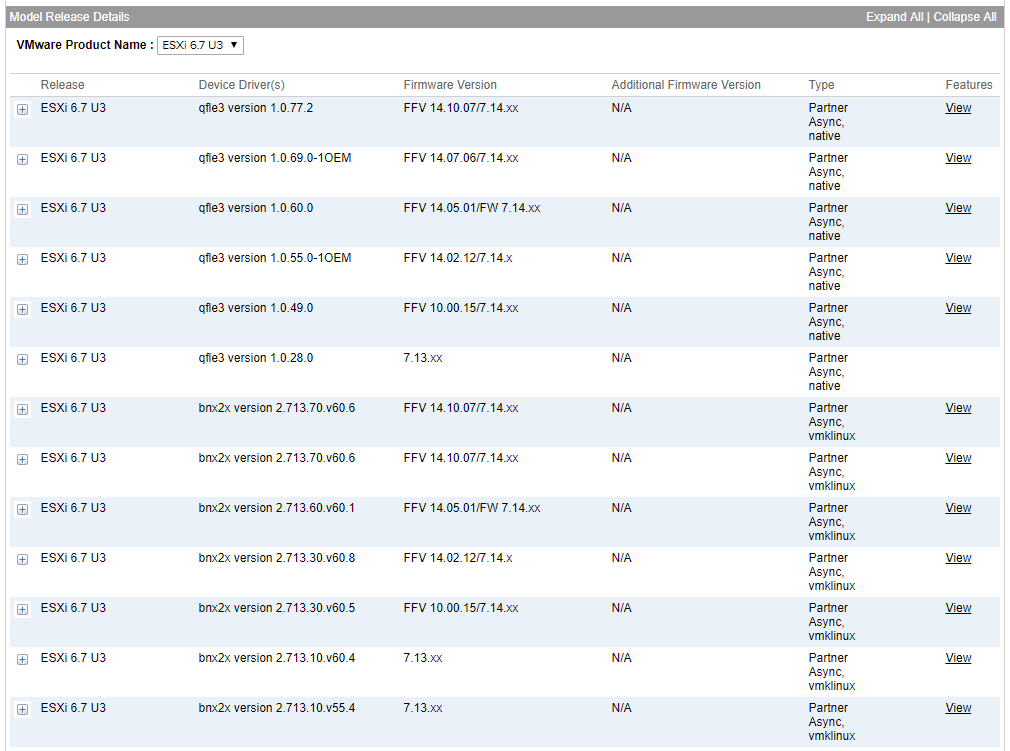During the day 1 of VMworld US 2019 there was a big announce about a new VMware vSphere impementation, called Project Pacific.
Project Pacific will be the biggest evolution of VMware vSphere in the last decade and a huge milestone.
continue reading…During the day 1 of VMworld US 2019 there was a big announce about a new VMware vSphere impementation, called Project Pacific.
Project Pacific will be the biggest evolution of VMware vSphere in the last decade and a huge milestone.
continue reading…Changed Block Tracking (CBT) is a VMware feature introduced in vSphere 4.0 in order to implement native incremental backup at source level. VMware VDAP uses this technology and so all backup and recovery software designed for VMware use it for speed the backup.
This mean that all the backup products that are using VDAP, will rely on VMware API and features, … and bugs.
continue reading…VMware vSphere leverages a vast vSphere driver ecosystem to run various I/O stacks like networking and storage on server platforms. This ecosystem is built out with technologies from many I/O partners. To better address the need to build software-defined infrastructure (SDI) based on vSphere, VMware introduced the vSphere kernel native AP
The Native Device Driver architecture is not something new. Since its introduction more than five years ago, VMware encourages their hardware ecosystem partners to work on developing native drivers.
VMware plans to deprecate the vmkLinux APIs and associated driver ecosystem with the next numbered release (not an update release) of VMware vSphere. The next version of vSphere will be the terminal release for which vmkLinux APIs and its associated driver ecosystem will be available. For more information see also: What is the Impact of the VMKlinux Driver Stack Deprecation?
VMware KB 52044 (Network I/O performance regression after migrating from bnx2x driver to qfle3 driver)
When you upgrade from VMware ESXi 6.5 to 6.7, you experience the below symptoms:
This issue occurs due to the difference in data path mechanism: bnx2x supports queue-paring mode, while qfle3 does not. As the result, qfle3consumes more MSI-X vectors in data path, which in turn causes higher system overhead. Because of the lack of queue-paring mode, networking Load balance is also unable to consolidate traffic in netqueue.
To resolve this issue:
1. Disable qfle3 driver and enable bnx2x driver by running the below commands:
esxcli system module set –enabled=true –module=bnx2x
esxcli system module set –enabled=false –module=qfle3
2. Reboot the ESXi host.
Note: VMware ESXi 6.7 image is shipped with both bnx2x and qfle3 drivers.
Custom ISO vs. vanilla ISO
Broadcom 57810-k DP 10Gb NDC ( SRIOV)

See also VMware KB Enabling and Disabling Native Drivers in ESXi 6.5 (2147565) https://kb.vmware.com/s/article/2147565
Runecast is a company that provides actionable predictive analytics for VMware vSphere environments. Runecast Analyzer is a solution that provides software-defined expertise to mitigate service outages, increase security and compliance and reduce time in troubleshooting.
This solution can discover hidden issues in your vSphere environment by using the current VMware Knowledge Base articles, that is probably the most trusted, complete and up-to-date public source of known issues and best practices related to VMware products, but it’s also typically used reactively, once the problem already persists.
continue reading…VMware vSAN 6.7U3 it’s out and maybe you would like to upgrade your environment.
But note that there are some possible performance issue with vSphere 6.7U3 on Dell servers.
In my opinion, one reason to upgrade is to finally have the automatical proactive rebalancing feature.
You can automate all rebalancing activities with cluster-wide configuration and threshold settings. Prior to this release, proactive rebalancing was manually initiated after being alerted by vSAN health checks.
continue reading…Last week, VMware has announced the future release of VMware vSphere 6.7 Update 3, that means, of course, also the new vSAN 6.7 Update 3 (vSAN is totally integrated in vSphere code).
Unfortunately, has happened in past, this is just a product announce, without provide the code of it and the date of General Availability (GA) release date (but I guess will be on VMworld US 2019). I usually prefer talk about what exist now and see the release notes.
The products are now GA and, most important the hardware compatibility and the software interoperability matrix have been updated!
continue reading…This is an article that I wrote as a contribuitor for the Aruba blog. Read the full article Stacking Network Switches: Why and Why Not.
In networking, the term “stack” (or stackable) refers to a group of physical switches that have been cabled and grouped in one single logical switch. Over the years, stacking features have evolved from a premium (and costly feature) to a core capability of almost all enterprise-grade switches (and also in several SMB models).
continue reading…